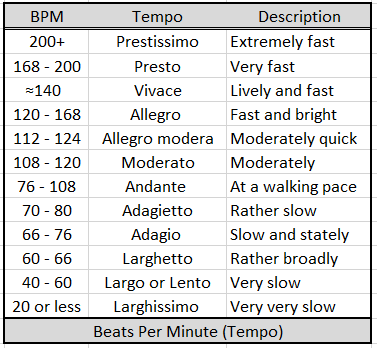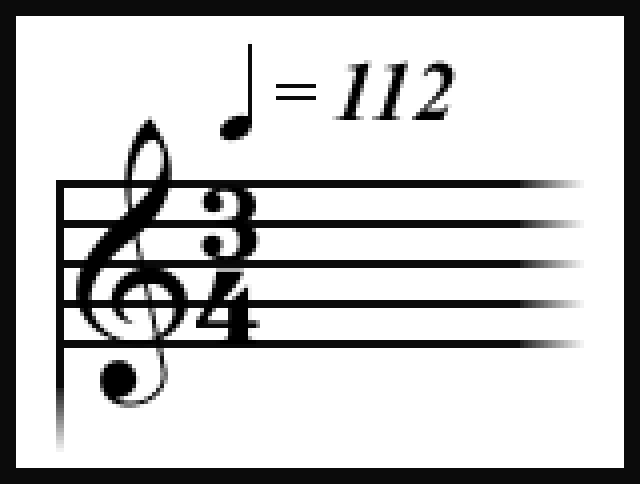The music calculator will help you find scale notes. Whether it is on a major scale or a minor scale. It aids in giving the semitone and tone pattern of the music.
The digits represent the number of semitones (half steps) between consecutive notes (called degrees of a scale). 1 means one semitone, 2 means two semitones (a whole tone), 3 means three semitones, and 4 means two whole tones.
You enter a note and the desired interval, and the calculator defines which note is at that distance.. If you want to know an interval between notes, the calculator will differentiate between enharmonic equivalents (like "C#" and "Db", which denote the same sound) and give you also diminished and augmented intervals.
The Music Duration Calculator computes:
- Duration of Music based on it's tempo, time signature and number of bars
- Tempo of Music based on the duration, time signature and number of bars.

What is the use?
- If you are composing music, this could be useful for determining the length of your song. It is handy for recording or when performing.
- Determining how fast or slow you have to play a song is crucial for instances like playing a soundtrack over a video or playing a song for a limited slot time.
Instructions
The calculator has two buttons. One to compute Music Duration, and one to compute Music Temp.
To find the Music Duration, click on the Duration button enter the following:
- Tempo (for example: 112 bpm)

- Number of measures (this could be found by counting the amount of bars from sheet music perhaps).

- Number of beats per measure which is given by the top unit of the time signature.

Example: Tempo = 100 bpm, number of measures = 140, beats per measure = 4
length of song = `(4 x 140)/100 * (60 "seconds")/"minute" ` = 336 seconds or 5.6 minutes
To find Music Tempo, click on the Tempo button enter the following:
- Beats per measure
- Number of measures
- Length of the music segment
You'll just need to manipulate the inputs in relation to the tempo:
Tempo = beats per measure x number of measures x 60 seconds
length of song (in seconds) minute
Different Tempos:
From fastest to slowest, the common tempo markings are:
• Prestissimo — extremely fast (200 and above bpm)
• Vivacissimamente — adverb of vivacissimo, "very quickly and lively"
• Vivacissimo — very fast and lively
• Presto — very fast (168–200 bpm)
• Allegrissimo — very fast
• Vivo — lively and fast
• Vivace — lively and fast (≈140 bpm)
• Allegro — fast and bright or "march tempo" (120–168 bpm)
• Allegro moderato — moderately quick (112–124 bpm)
• Allegretto — moderately fast (but less so than allegro)
• Allegretto grazioso — moderately fast and gracefully
• Moderato — moderately (108–120 bpm)
• Moderato espressivo — moderately with expression
• Andantino — alternatively faster or slower than andante
• Andante — at a walking pace (76–108 bpm)
• Tranquillamente — adverb of tranquillo, "tranquilly"
• Tranquillo — tranquil
• Adagietto — rather slow (70–80 bpm)
• Adagio — slow and stately (literally, "at ease") (66–76 bpm)
• Grave — slow and solemn
• Larghetto — rather broadly (60–66 bpm)
• Largo — Very slow (40–60 bpm), like lento
• Lento — very slow (40–60 bpm)
• Largamente/Largo — "broadly", very slow (40 bpm and below)
• Larghissimo — very very slow (20 bpm and below)
Terms for tempo change:
Rallentando – gradually slowing down
Ritardando – holding back, becoming slower
Ritenuto – immediately slowing down
Accelerando or stringendo – gradually accelerating
Articulation Terms:
• Marcato — marching tempo "Stacotto-ish" Strong
• Misterioso - slightly slower than marcato
• Tempo comodo — at a comfortable speed
• Tempo giusto — at a consistent speed
• L'istesso tempo — at the same speed
• Non troppo — not too much (e.g. Allegro ma non troppo, "fast but not too much")
• Assai — rather, very, enough as is needed (e.g. Adagio assai)
• Con — with (e.g. Andante con moto, "at a walking pace with motion")
• Molto — much, very (e.g. Molto allegro)
• Poco — a little (e.g. Poco allegro)
• Quasi — as if (e.g. Più allegro quasi presto, "faster, as if presto")
• tempo di... — the speed of a ... (e.g. Tempo di valse (speed of a waltz), Tempo di marcia
(speed of a march))
Musical intervals
The smallest musical interval is the minor second. It's equal to one semitone, so a minor second is, for example, between G and Ab. If you go from C to D, you will go up by a tone (two semitones), which is known as a major second.
*A tritone is also called an augmented fourth or a diminished fifth (depending on the context).
You should use the first one when you want to know an interval between two sounds. For example, between a piano key which we denote by C, and another one denoted by C? or D?. The interval between the sounds produced by these two keys is a minor second. We don’t use the augmented and diminished intervals here, as you would never talk about an augmented prime if somebody sang two sounds to you and asked what interval is
If you want to find an interval between two notes, leave the interval type in the calculator as the default and simply choose the names of the note. note 1 has to be the lower than note 2.
If you want to know an interval between two sounds:
Change the "interval type" in the first field.
Choose the note and octave by which we denote the first sound.
Choose the note and octave by which we denote the second sound.
At the bottom of the music interval calculator you'll see what's the interval between the two pitches.
Determine an interval between two notes
Intervals consists of a number (second, third, fourth) and its quality (minor, major, perfect). To check the interval between two notes:
Identify the number - erase the accidentals (C# becomes C, Bb becomes B, etc.), then count the steps as if we were using a C-major scale. For example, from G# to E, you count:
G - 1, A - 2, B - 3, C - 4, D - 5, E - 6
E is the sixth note, so the interval is a sixth.
Identify the interval quality by counting the semitones between the notes, still ignoring the accidentals.
For example, we have 9 semitones between G and E (check with a keyboard), which makes it a major sixth.
Adjust for accidentals:
If the notes have no accidentals or they are the same in both notes (F# and G#, Bb and Ab, etc.), the interval from step 2 stays the same.
Otherwise:
"?" next to the lower note increases the interval, "?" decreases it;
"?" next to the higher note decreases the interval, "?" increases it.
Now, if you decrease an interval by a semitone:
If it's major, it changes to minor;
If it's minor or perfect, it changes to diminished; and
If it's diminished, it changes to doubly diminished.
If you increase an interval by a semitone:
If it's minor, it changes to major;
If it's major or perfect, it changes to augmented; and
If it's augmented, it changes to doubly augmented.
Let's find an interval between A# and C:
Count the steps for the notes without accidentals:
A - 1; B - 2; C - 3 - it's a third.
2. Between A and C there are 3 semitones - it's a minor third.
3. We have to decrease the interval because of the sharp sign. The minor third becomes a diminished third.
Sources/References:
-http://pickuptheguitar.com/calculate-length-song
-http://www.signalcorpsbands.com/uploads/2/0/9/9/20995666/basic_tempo_markings.pdf